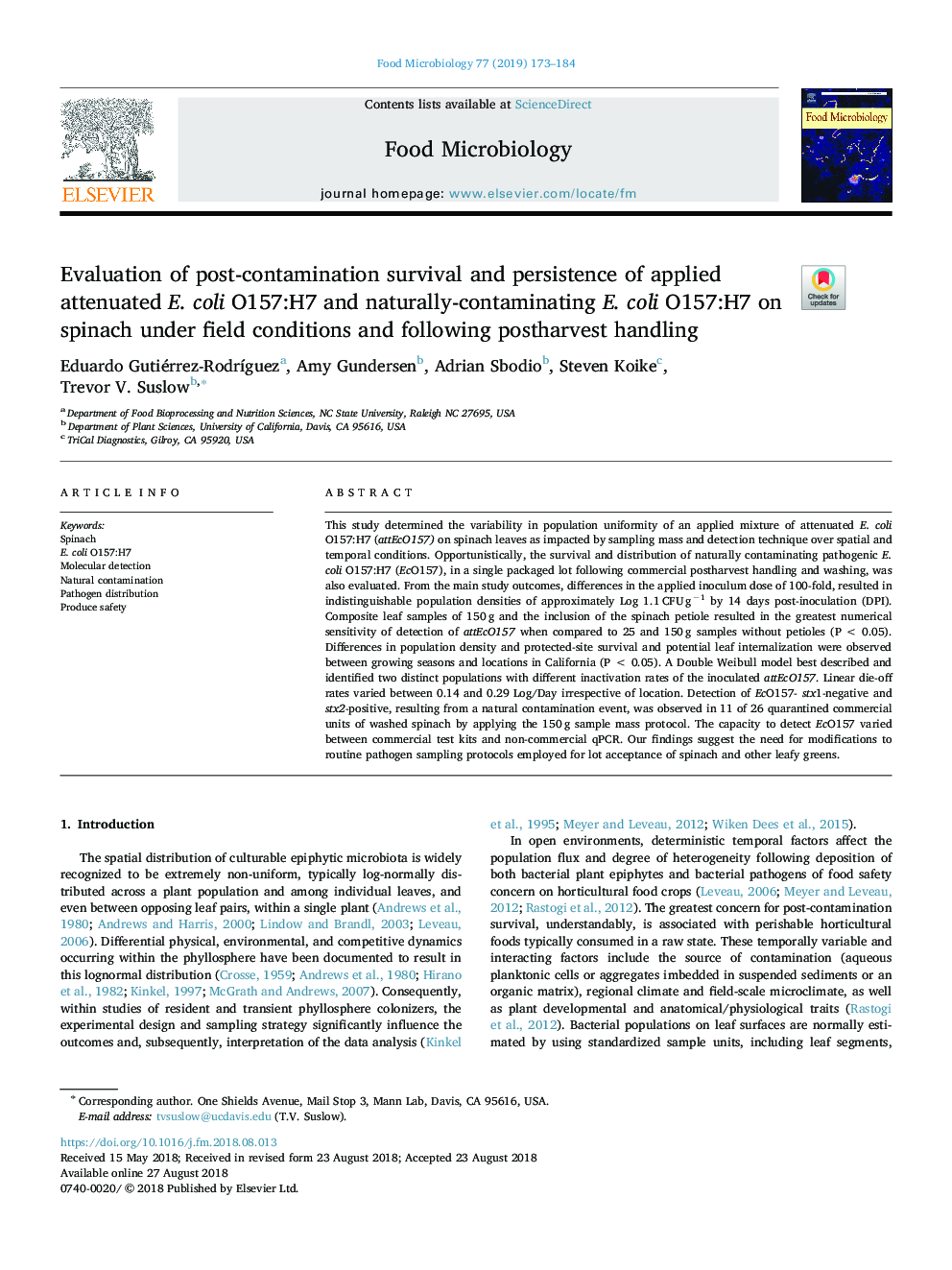| Article ID | Journal | Published Year | Pages | File Type |
|---|---|---|---|---|
| 11032646 | Food Microbiology | 2019 | 12 Pages |
Abstract
This study determined the variability in population uniformity of an applied mixture of attenuated E. coli O157:H7 (attEcO157) on spinach leaves as impacted by sampling mass and detection technique over spatial and temporal conditions. Opportunistically, the survival and distribution of naturally contaminating pathogenic E. coli O157:H7 (EcO157), in a single packaged lot following commercial postharvest handling and washing, was also evaluated. From the main study outcomes, differences in the applied inoculum dose of 100-fold, resulted in indistinguishable population densities of approximately Log 1.1â¯CFUâ¯gâ1 by 14 days post-inoculation (DPI). Composite leaf samples of 150â¯g and the inclusion of the spinach petiole resulted in the greatest numerical sensitivity of detection of attEcO157 when compared to 25 and 150â¯g samples without petioles (Pâ¯<â¯0.05). Differences in population density and protected-site survival and potential leaf internalization were observed between growing seasons and locations in California (Pâ¯<â¯0.05). A Double Weibull model best described and identified two distinct populations with different inactivation rates of the inoculated attEcO157. Linear die-off rates varied between 0.14 and 0.29 Log/Day irrespective of location. Detection of EcO157- stx1-negative and stx2-positive, resulting from a natural contamination event, was observed in 11 of 26 quarantined commercial units of washed spinach by applying the 150â¯g sample mass protocol. The capacity to detect EcO157 varied between commercial test kits and non-commercial qPCR. Our findings suggest the need for modifications to routine pathogen sampling protocols employed for lot acceptance of spinach and other leafy greens.
Related Topics
Life Sciences
Agricultural and Biological Sciences
Food Science
Authors
Eduardo Gutiérrez-RodrÃguez, Amy Gundersen, Adrian Sbodio, Steven Koike, Trevor V. Suslow,
